The Be-Still Tree (Cascabela thevetia), also known as Lucky Nut or Yellow Oleander, is a perennial shrub native to Mexico, Central, and South America. Belonging to the Apocynaceae family, this plant thrives in hardiness zones 8–10 and flourishes in full sun. Despite its common name, Yellow Oleander is not directly related to the true oleander (Nerium oleander) but shares the same family.
Yellow Oleander stands out for its vibrant yellow, trumpet-shaped flowers and glossy, lance-shaped leaves, giving it an ornamental appeal in warm-climate gardens. However, gardeners should handle the plant with care due to its toxic properties.
In this guide, you’ll find essential information about the Be-Still Tree, along with practical care tips to help you cultivate this striking shrub safely and successfully.
| Common name | Be-Still Tree, Lucky Nut, Yellow Oleander |
| Botanical name | Cascabela thevetia |
| Family | Apocynaceae |
| Species | thevetia |
| Origin | Mexico, Central and South America |
| Life cycle | Perennial |
| Plant type | Shrub |
| Hardiness zone | 8, 9, 10 |
| Sunlight | Full Sun |
| Maintenance | Low |
| Soil condition | High Organic Matter |
| Soil ph | Alkaline |
| Drainage | Well-Drained |
| Growth rate | Medium |
| Spacing | 12 in. – 3 ft. |
| Harvest time | Winter |
| Flowering period | Fall |
| Height | 4 ft. – 8 ft. |
| Flower color | Cream, Tan |
| Leaf color | Green |
| Fruit color | Black |
| Stem color | Gray, Silver |
| Fruit type | Nut |
| Flower benefit | Fragrant |
| Garden style | Drought Tolerant Garden |
| Uses | Container |
I. Appearance and Characteristics
Cascabela thevetia (synonym Thevetia peruviana) is a poisonous plant native throughout Mexico and in Central America, and cultivated widely as an ornamental. It is a relative of Nerium oleander, giving it a common name yellow oleander.
‘Cascabel’, ‘cascavel’ or ‘cascabela’ is Spanish for a small bell, a snake’s rattle or a rattlesnake itself. The allusion may also be to the plant’s toxicity comparable to the venom of a rattlesnake. The latin specific name thevetia commemorates André de Thevet (1516-1590), a French Franciscan priest and explorer, who explored Brazil and Guiana (where the plant is known as chapéu-de-napoleão, ie, Napoleon’s hat).
Cascabela thevetia is an evergreen tropical shrub or small tree. Its leaves are willow-like, linear-lanceolate, and glossy green in color. They are covered in waxy coating to reduce water loss (typical of oleanders). Its stem is green turning silver/gray as it ages. Flowers bloom from summer to fall. The long funnel-shaped sometimes-fragrant yellow (less commonly apricot, sometimes white) flowers are in few-flowered terminal clusters. Its fruit is deep red-black in color encasing a large seed that bears some resemblance to a ‘Chinese lucky nut’.
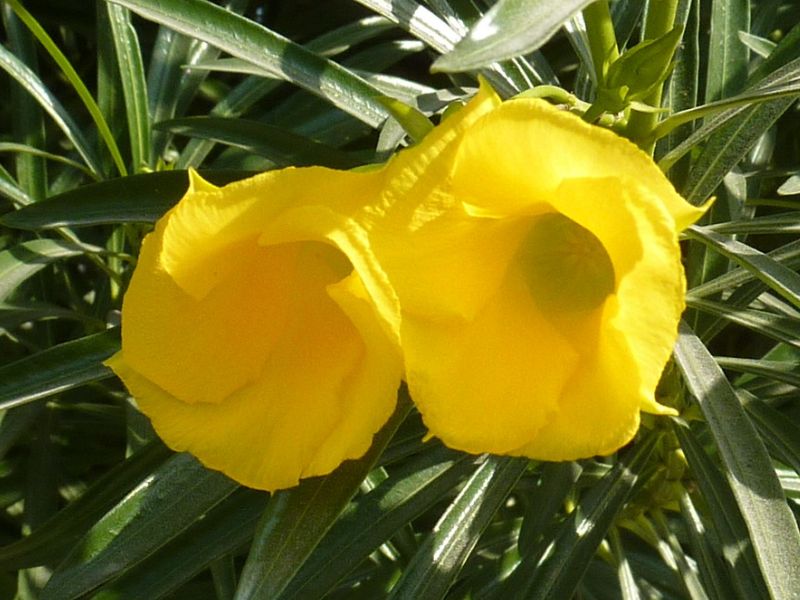
Cascabela thevetia is commonly known as Kaneir or Kaner (कनेर) in Hindi language in India. It is effectively drought resistant and tolerant to high temperatures, hence found in various states of India like Andhra, Bihar, Delhi, Gujarat, Madhya Pradesh, Telangana, West Bengal, Rajasthan, Tamil Nadu, Uttar Pradesh , Odisha and Assam where semi arid climate is prevalent.
All parts of the C. thevetia plant are toxic to most vertebrates as they contain cardiac glycosides. Many cases of intentional and accidental poisoning of humans are known.
II. How to Grow and Care
Light and Temperature
The plant is winter hardy to USDA zones 8 to 10, and may not survive the winter in cooler regions.
Indoors, it can survive at regular room temperature.
Ensure that the plant gets sunlight throughout the year. Outdoors, give it full sun or partial shade.
Even in cooler regions, the plant can grow outdoors and brought in after the flowers bloom.
When grown indoors, set it near a west-facing or south-facing window for the most exposure to sunlight.
Watering
Originating from tropical regions, yellow oleander is accustomed to a balance of moisture and well-draining conditions. This species exhibits moderate drought tolerance and thrives with humidity levels akin to its native habitat. For optimal health, watering should occur once every 1-2 weeks, allowing the soil to dry slightly between sessions. As an outdoor plant often found in warmer climates, yellow oleander benefits significantly from mulching to retain soil moisture during hot spells without compromising root health.
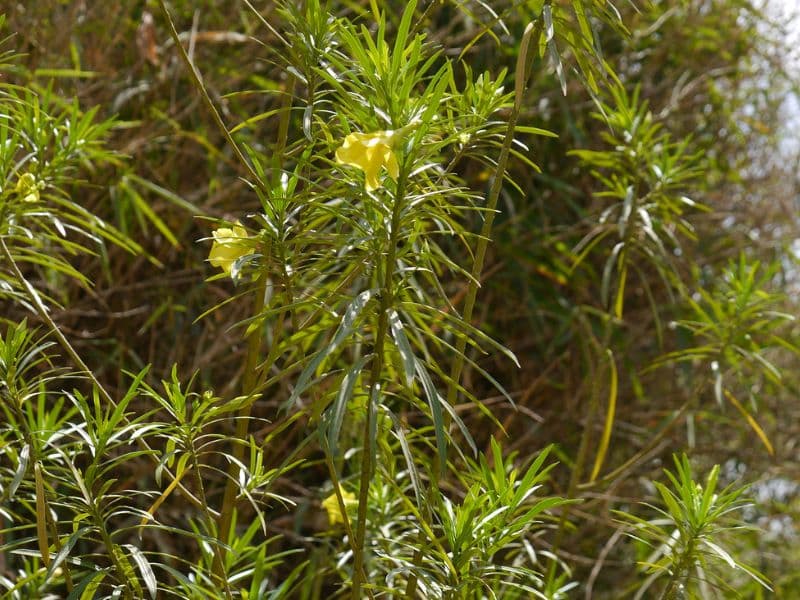
Soil and Transplanting
Grow the plant in soil with fast drainage. Combine regular potting soil with peat moss or compost to create better drainage and encourage a healthy root system.
The plant should be repotted every two or three years, using the same soil recommendations.
Always repot in March, just before the start of spring and the active growing season.
When repotting, use a pot slightly larger than the previous one. Use part of the old potting soil combined with fresh soil.
Fertilizing
For robust growth and lush foliage, fertilize yellow oleander monthly during the growing season with high-nitrogen fertilizer, following manufacturer’s instructions to avoid overfeeding. Benefits include enhanced flowering and plant vigor. During winter, reduce feeding as yellow oleander enters dormancy. Use gloves, as all parts are toxic if ingested. Novices should ensure the soil is moist before fertilizing to prevent root burn, while experienced cultivators can augment with phosphorus to further boost bloom production.
Grooming And Maintenance
To manage the growth of the plant, trim it back in the fall. Non-flowering stems can be removed for cuttings.
Note: When trimming the plant, wear gloves to protect skin from the sap.
The poisonous substance may cause skin irritation or severe rashes.
Propagation
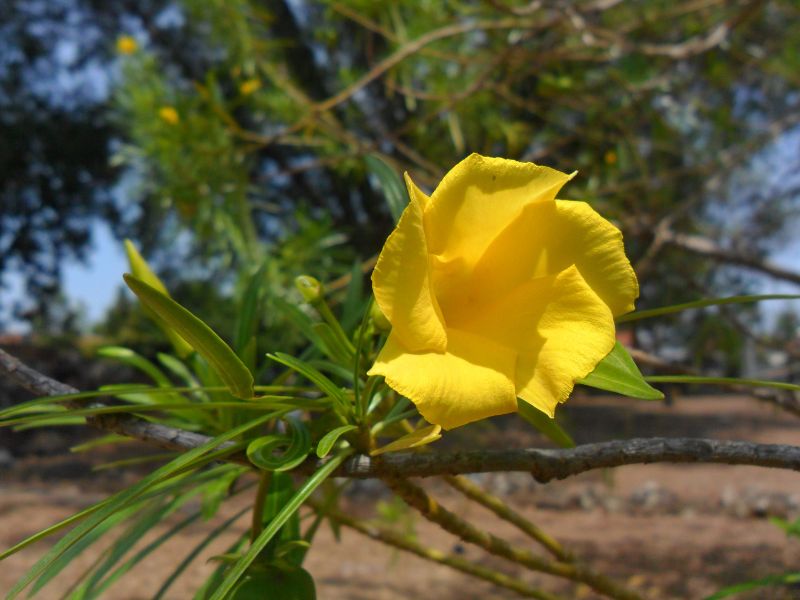
Propagate the plant using cuttings taken from non-flowering stems.
Dip the tips in rooting hormone and plant in regular potting soil.
Keep the plant trays warm, preferably over a heat source.
If a heat source isn’t available to set the plant on, cover the tray with plastic and poke holes for ventilation.
Set near a window with lots of sunlight.
The cuttings should take root within a few weeks.
If the cuttings are taken toward the end of the season, wait until next spring to transplant them into individual containers or the garden.
Pests and Diseases
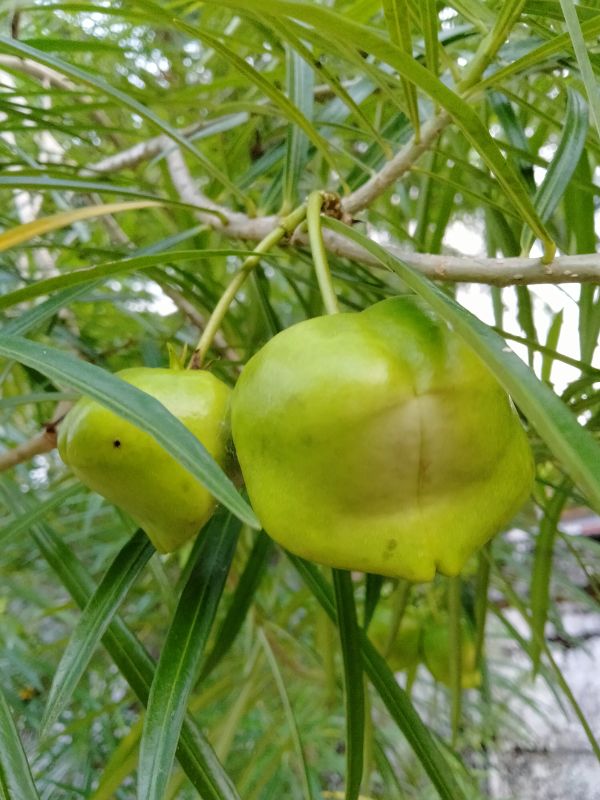
- Mealybugs and scale insects may threaten the plant. Remove scale insects with a toothpick or apply sprays of Neem oil.
- They appear under the leaves and resemble small brown scales.
- The mealybugs resemble cottony blobs. Use a cotton swab dubbed in alcohol to remove the pests.
Besides threats to the plant, it’s important to consider the threats to people and pets.
Yellow Oleander Poisoning: The oleander leaves and flowers are poisonous and should be kept away from children, dogs, and cats.
- If the plant doesn’t flower, it likely needs more sunlight.
- If the flower buds drop before blooming, the air is likely too cold.
- Move outdoor plants indoors and increase the temperature.
III. Uses and Benefits
- Ornamental uses
Yellow oleander is a popular tree prized for its slender foliage and bright yellow flowers. It is commonly used as an ornamental garden plant in temperate climates or as a natural privacy shrub when grown close together. Plant it with other species in the genus for contrasting height and color or with crotons, firebush, and plumbago.
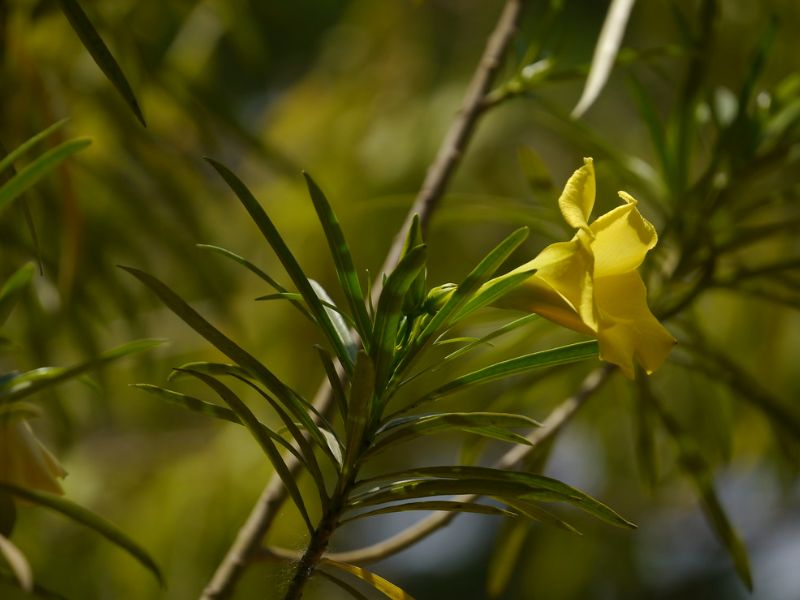
- Medicinal uses
The plant is reported to have a variety of therapeutic effects in various areas. In tropical Asia and America, the plant is frequently employed in household medicine.
Traditional uses of this plant include the treatment of amenorrhea, malaria, jaundice, hemorrhoids, constipation, migraines, and skin conditions.
A variety of cardiac glycosides make up the majority of the plant’s medicinally significant constituents. Peruvoside has been studied the most out of these glycosides.
Peruvoside can successfully cure all types of cardiac insufficiency, according to large-scale clinical studies involving 1,600 patients.
- Biological pest control
The plant’s toxins have been tested in experiments for uses in biological pest control. T. peruviana seed oil was used to make a ‘paint’ with antifungal, antibacterial and anti-termite properties.
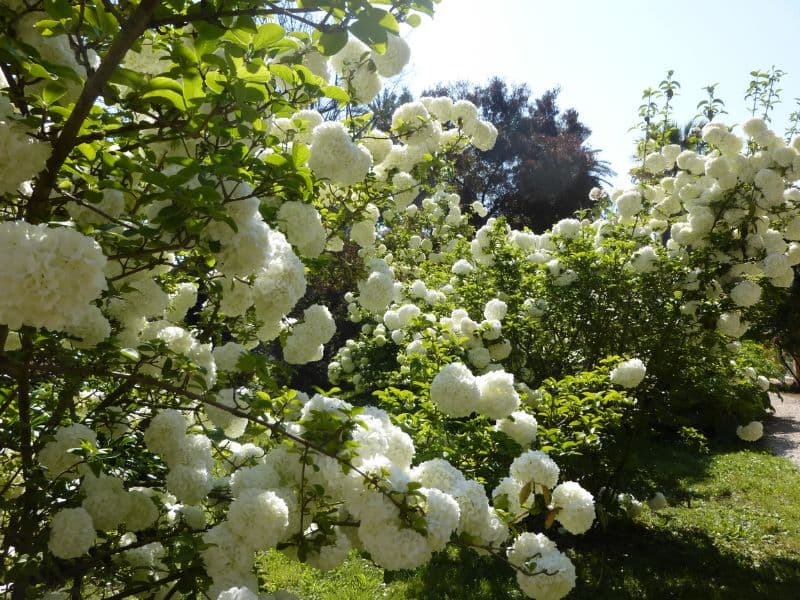
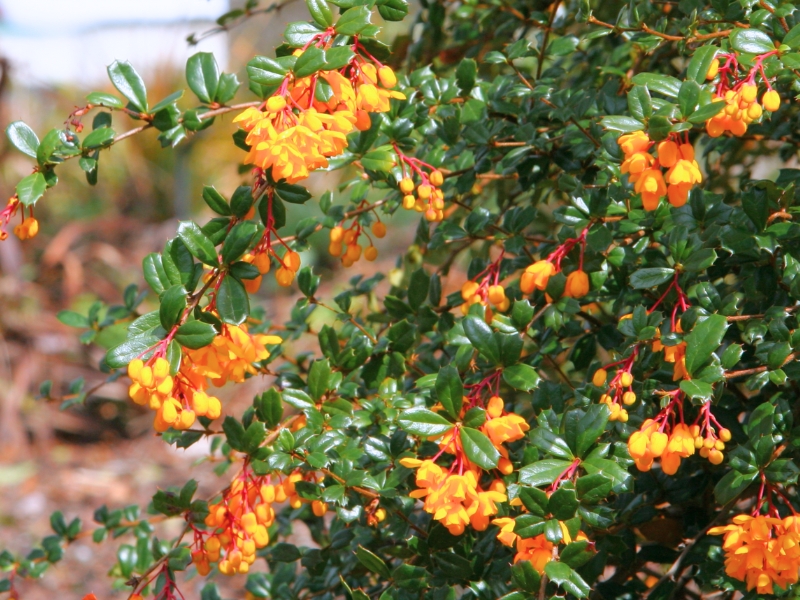
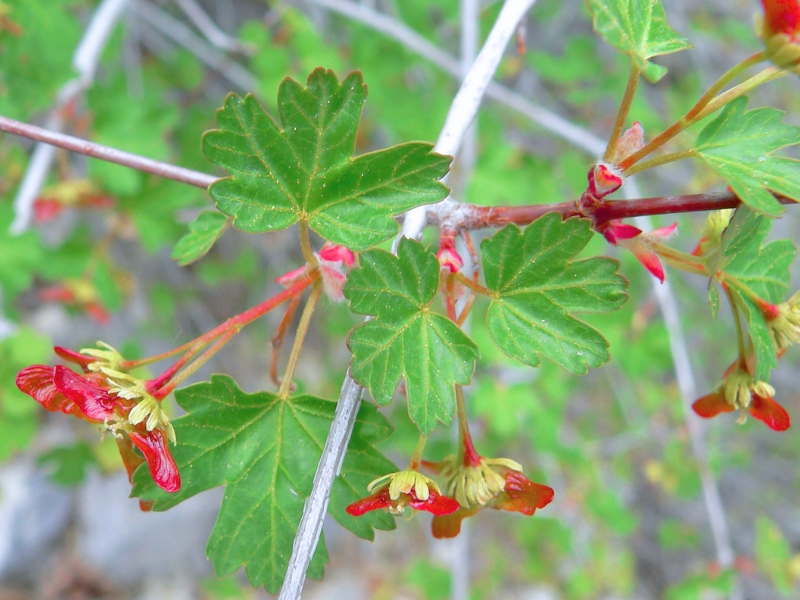
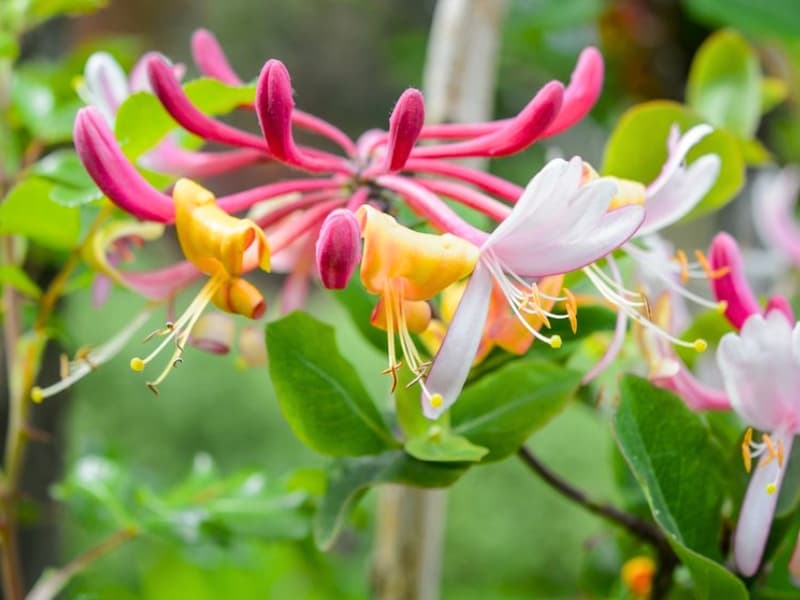
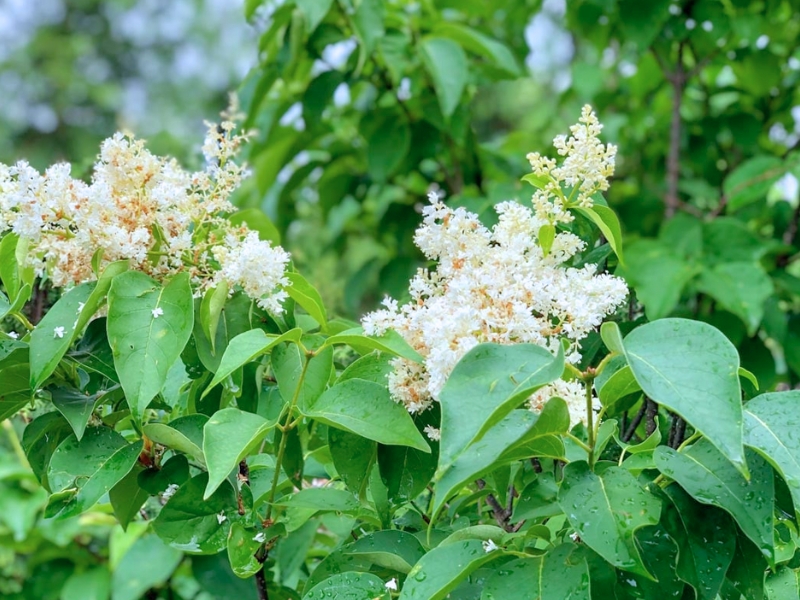
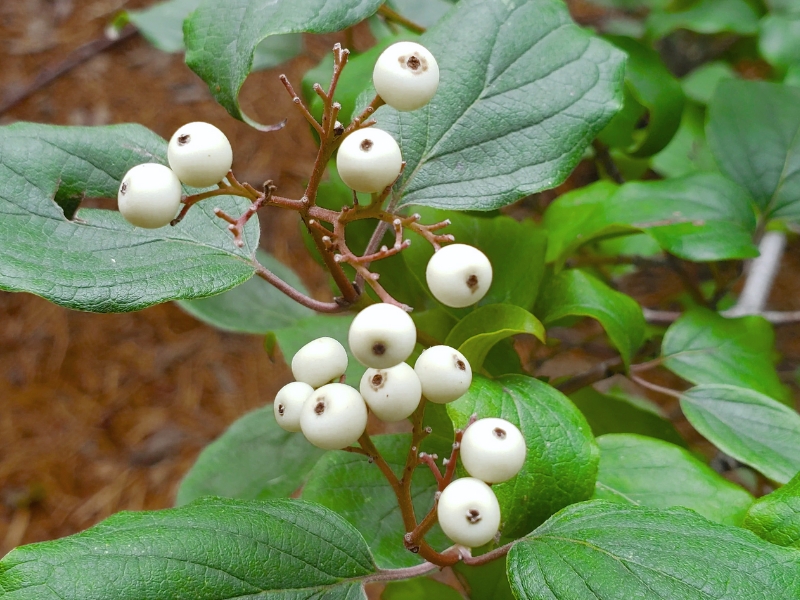
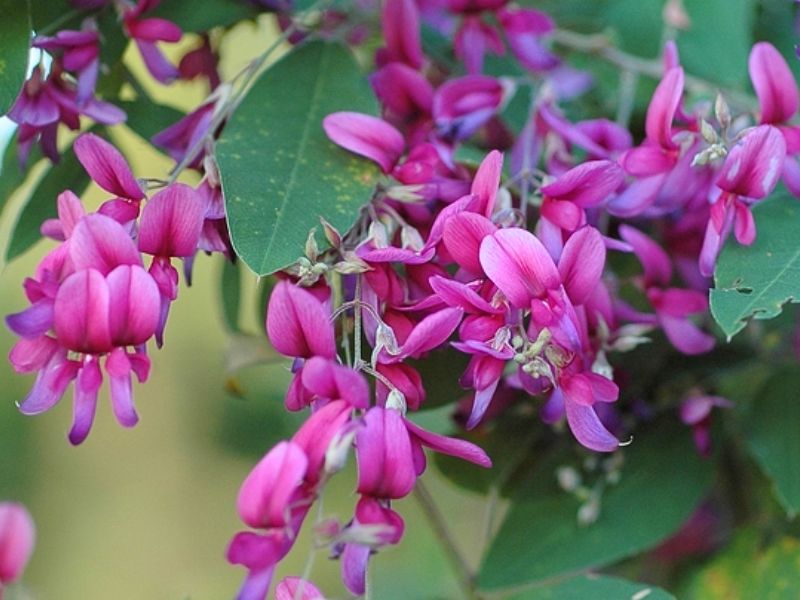
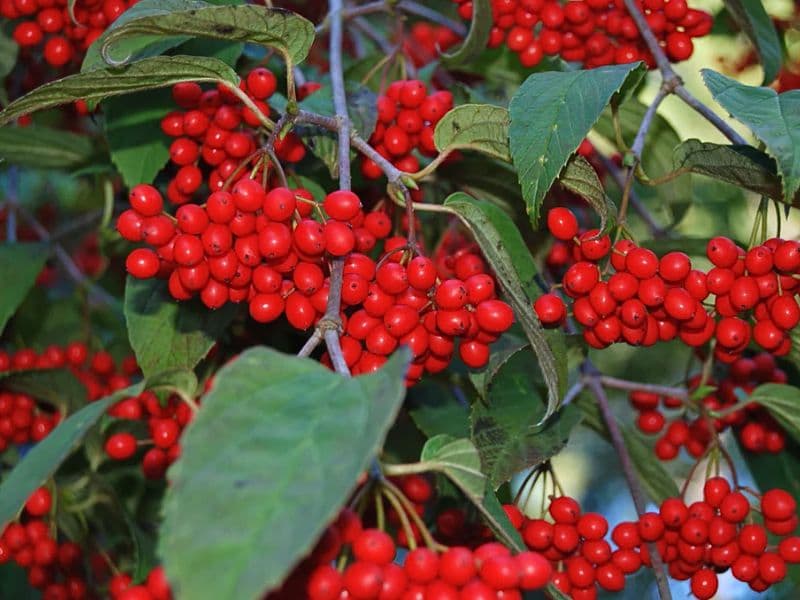
Leave a Reply